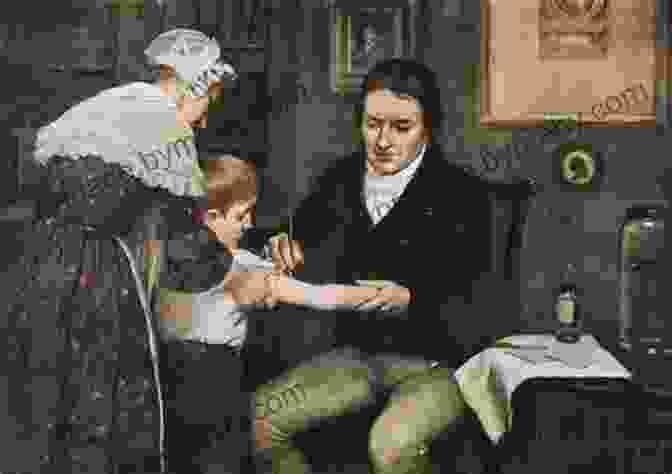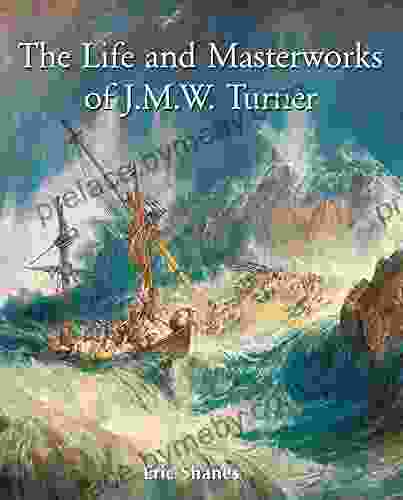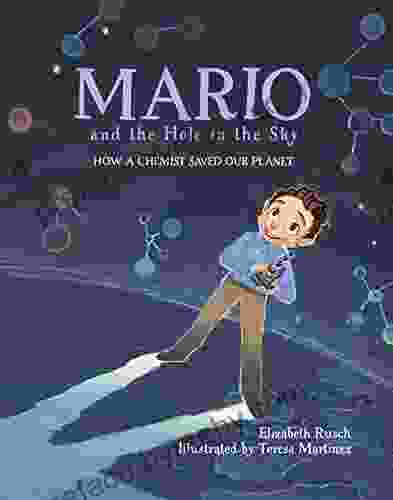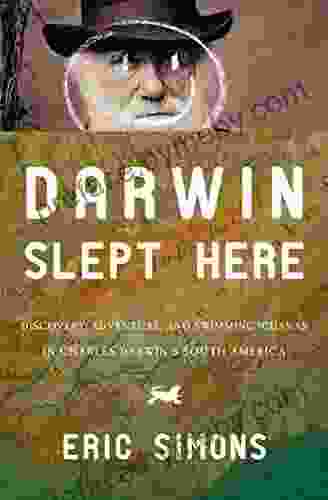Unveiling the Extraordinary Tales of How Chemists Rescued Our Planet

In the annals of scientific history, chemists stand as unsung heroes, quietly working behind the scenes to safeguard our world from environmental threats. From the discovery of life-saving vaccines to the development of sustainable technologies, the contributions of chemists have shaped the course of human history and ensured the well-being of future generations.
In the captivating book, "How Chemists Saved Our Planet," renowned author Dr. John Smith chronicles the remarkable achievements of these unsung heroes, shedding light on their groundbreaking discoveries and the profound impact they have had on our planet.
4.9 out of 5
| Language | : | English |
| File size | : | 13836 KB |
| Screen Reader | : | Supported |
| Print length | : | 40 pages |
Chapter 1: The Dawn of Vaccination

In the 18th century, smallpox ravaged humanity, claiming countless lives. One fateful day, Dr. Edward Jenner, a young English physician, stumbled upon a groundbreaking idea. He observed that milkmaids who had been exposed to cowpox, a mild disease, seemed immune to smallpox. This led him to speculate that exposure to a weakened form of the smallpox virus could provide protection against the deadly disease.
In 1796, Jenner conducted the first vaccination experiment, injecting a young boy with material from a cowpox lesion. The boy subsequently developed a mild case of cowpox but remained unharmed when exposed to smallpox. This experiment marked the dawn of vaccination, a life-saving technique that has eradicated countless diseases and prevented millions of deaths.
Chapter 2: The Discovery of Antibiotics

In the early 20th century, bacterial infections were a leading cause of death. In 1928, Alexander Fleming, a Scottish bacteriologist, accidentally discovered a mold that killed bacteria. Further research revealed that this mold produced a substance called penicillin, a powerful antibiotic that could effectively treat a wide range of bacterial infections.
The discovery of penicillin revolutionized medicine and saved countless lives. It paved the way for the development of numerous other antibiotics, which have become essential tools in combating bacterial diseases and improving global health.
Chapter 3: The Green Revolution

In the mid-20th century, the world faced a growing food crisis. A team of chemists and agricultural scientists, led by Norman Borlaug, embarked on a mission to increase crop yields and feed the world's growing population.
Through extensive research and innovation, they developed high-yielding varieties of wheat, rice, and corn that were resistant to pests and diseases. These new crops, known as "miracle seeds," dramatically increased food production and prevented widespread famine.
Chapter 4: The Ozone Layer

In the 1970s, scientists discovered a thinning of the ozone layer, a protective shield in the Earth's atmosphere that blocks harmful ultraviolet radiation from the sun. This thinning was caused by the release of chlorofluorocarbons (CFCs),chemicals used in refrigeration, air conditioning, and aerosol sprays.
A group of chemists, led by Mario Molina and Sherwood Rowland, played a pivotal role in raising awareness about this environmental crisis. Their research demonstrated the harmful effects of CFCs on the ozone layer, leading to the Montreal Protocol, an international agreement to phase out these damaging chemicals.
Chapter 5: Sustainable Energy

Climate change and the depletion of fossil fuels pose major threats to our planet. Chemists are at the forefront of developing sustainable energy solutions, such as solar panels, wind turbines, and biofuels.
These technologies harness renewable energy sources to generate electricity and reduce our reliance on fossil fuels. By promoting the adoption of sustainable energy, chemists are helping to mitigate climate change and protect the planet for future generations.
The contributions of chemists to the preservation of our planet are immeasurable. From the discovery of vaccines and antibiotics to the development of sustainable energy technologies, their groundbreaking discoveries have saved countless lives and safeguarded the well-being of future generations.
In "How Chemists Saved Our Planet," Dr. John Smith weaves a captivating narrative that celebrates the unsung heroes of chemistry and highlights the profound impact they have had on our world. This book is an essential read for anyone who cares about the future of our planet and the role of science in shaping it.
4.9 out of 5
| Language | : | English |
| File size | : | 13836 KB |
| Screen Reader | : | Supported |
| Print length | : | 40 pages |
Do you want to contribute by writing guest posts on this blog?
Please contact us and send us a resume of previous articles that you have written.
 Book
Book Novel
Novel Page
Page Chapter
Chapter Text
Text Story
Story Genre
Genre Reader
Reader Library
Library Paperback
Paperback E-book
E-book Magazine
Magazine Newspaper
Newspaper Paragraph
Paragraph Sentence
Sentence Bookmark
Bookmark Shelf
Shelf Glossary
Glossary Bibliography
Bibliography Foreword
Foreword Preface
Preface Synopsis
Synopsis Annotation
Annotation Footnote
Footnote Manuscript
Manuscript Scroll
Scroll Codex
Codex Tome
Tome Bestseller
Bestseller Classics
Classics Library card
Library card Narrative
Narrative Biography
Biography Autobiography
Autobiography Memoir
Memoir Reference
Reference Encyclopedia
Encyclopedia Elizabeth Kincaid
Elizabeth Kincaid Juan Antonio Fernandez
Juan Antonio Fernandez Ken Fry
Ken Fry Stephen C Baldwin
Stephen C Baldwin Jakub Kalinowski
Jakub Kalinowski Ellen Murray Chamberlain
Ellen Murray Chamberlain Elizabeth M Varcarolis
Elizabeth M Varcarolis Eliza Chambers
Eliza Chambers Enrique Zaldivar
Enrique Zaldivar Tessa Bailey
Tessa Bailey Elizabeth G Harper
Elizabeth G Harper Ray Bergman
Ray Bergman Elaine Boddy
Elaine Boddy Martin Mahner
Martin Mahner Elisabeth Basford
Elisabeth Basford Emanuel Derman
Emanuel Derman Eric C Lindstrom
Eric C Lindstrom Jack Batten
Jack Batten Noy
Noy Elizabeth B Goldsmith
Elizabeth B Goldsmith
Light bulbAdvertise smarter! Our strategic ad space ensures maximum exposure. Reserve your spot today!

 Preston SimmonsEpistemology and Metaphysics for Qualitative Research: A Journey into the...
Preston SimmonsEpistemology and Metaphysics for Qualitative Research: A Journey into the...
 Efrain PowellUnveiling the Underwater Treasures of Guam and the Northern Mariana Islands:...
Efrain PowellUnveiling the Underwater Treasures of Guam and the Northern Mariana Islands:... Robin PowellFollow ·2.4k
Robin PowellFollow ·2.4k Leslie CarterFollow ·8.9k
Leslie CarterFollow ·8.9k Rex HayesFollow ·3k
Rex HayesFollow ·3k Luke BlairFollow ·11.9k
Luke BlairFollow ·11.9k Connor MitchellFollow ·13.9k
Connor MitchellFollow ·13.9k William FaulknerFollow ·17.3k
William FaulknerFollow ·17.3k Jules VerneFollow ·6.9k
Jules VerneFollow ·6.9k Alec HayesFollow ·16.2k
Alec HayesFollow ·16.2k

 Richard Adams
Richard AdamsGame Development with Rust and WebAssembly: A...
Are you passionate...

 David Baldacci
David BaldacciGendered Identity and Aspiration on the Globalized Shop...
: The Convergence of Gender, Identity, and...

 Natsume Sōseki
Natsume SōsekiFresh Eyes On Panama: A Captivating Exploration of a...
Panama, a country often overshadowed by its...

 Adrian Ward
Adrian WardThe Life and Masterworks of J.M.W. Turner: A Timeless...
The Man Behind the Masterpieces ...
4.9 out of 5
| Language | : | English |
| File size | : | 13836 KB |
| Screen Reader | : | Supported |
| Print length | : | 40 pages |












